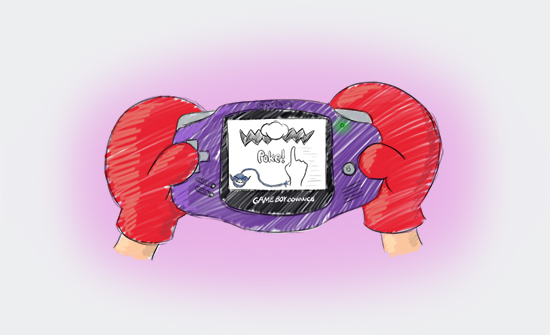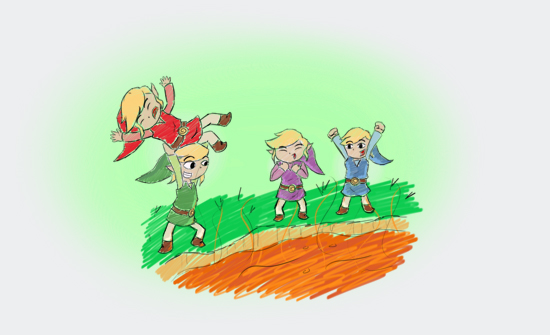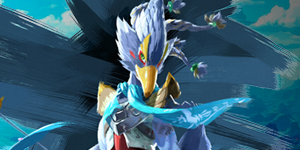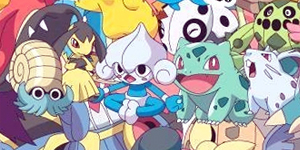Extra: Flashback Vol. 4 – Game Boy Advance
Welcome to the most advanced Flashback yet. We mean that literally as this edition is dedicated to the final member of the Game Boy family, the Game Boy Advance. The handheld was the first major update for the aging Game Boy line (the Game Boy Color was arguably a mere half step), and with it quickly came a wave of excellent Super NES ports that utilized its extra power. Beyond those ports, however, were a slew of original titles that became the true gems of the system. For this Flashback, we’re focusing on those GBA-only experiences. We each chose two of our favorite games from the era and reflect on them below with original artwork and retrospectives. No matter which variation of the Game Boy Advance you play them on – the original, the SP, or the Micro – these are the games that simply can’t be missed. Enjoy!

Jose’s Pick: Wario Land 4
Before I played Wario Land 4, I didn’t think much of Wario. I skipped over the previous entries, so I never would have guessed that I was missing out on such a polished and unpredictable platformer. Wario Land 4 literally blew my mind when I first played it. The music, stages, and enemies were all over place, yet it all meshed perfectly. I never thought I would be trying to avoid a giant flying pig that paints smaller pigs that attack me. Needless to say, this game sure leaves one heck of an impression. I would go as far as to say that I actually had more fun playing Wario Land 4 than any other platformer that generation. The game had expertly designed levels that not only tested your skill, but were fun enough to play multiple times to find all the secrets.
I am not sure if the previous titles in the Wario Land series followed this design, but Wario Land 4 was essentially a scavenger hunt. Every level had a CD, 4 pieces of a small pyramid, and a key nosed ghost named… Keyzer. To complete each level, you had to find the four pieces of the pyramid and Keyzer. Once you did that, you reached a point where you had to activate a switch that would open your way out of the level, which was right where you began. The twist was that you were then timed, and sometimes the level changed and alternate routes had to be taken back to the start. It’s a good thing Wario had so many options at his disposal. Not only could he transform depending on the situation, but he also had dash and shoulder attacks, one mean throw, and a ground pound that puts Mario to shame. If you have not played this game, make it a point to do so. This is one platformer you do not want to jump over.

Jose’s Pick: Metroid Fusion
Surprisingly, Metroid Fusion was my first foray into the Metroid-verse. Luckily for me, Fusion was not only designed to ease players into the Metroid gameplay style, but it also had an engaging plot and a difficulty that was quite challenging yet very balanced. It also helped that this game had the responsive controls of a great platformer, with enough freedom to explore at your leisure. Though you explored the environment alone, you had your trusty Navigation Center telling you where your objective was located. While it told you its location, it didn’t tell you exactly how to get there; that was for you to figure out. This hand-holding slowly lessened its grip as the game progressed, but it never prepared you for SA-X (Samus X). This character definitely stuck with me after beating the game. The thought that there was another you, an evil you, hunting you down was pretty intense. Not to mention that SA-X was much more powerful than you. All you could do was run and hope it didn’t catch you. This mechanic alone definitely made the game one to remember.
Not only was the gameplay great, but the environments and music were also top notch. The main theme of the game would most certainly land on my list of top video game tracks. Like any good game, the creators knew when to have music and when to have absolutely nothing but the sound of your arm cannon firing. Fusion’s atmosphere was crafted to give you a sense of isolation, urgency, and curiosity. The game was also not afraid to use color when appropriate, breaking up the desolation with vibrant deserts and underwater worlds. Basically, if you have never played a side-scrolling Metroid game, I would say to start with this one. Luckily for those that bought a 3DS early in its life, most of the games in this Flashback, Metroid Fusion included, are available to download for free. So if you are part of the Ambassador Program (or if not, just hunt down a copy and a GBA), your mission is to play and complete Metroid Fusion!

Jason’s Pick: WarioWare, Inc.: Mega Microgame$!
There’s crazy and then there’s WarioWare. In no other game do you pick a nose, pinch a chicken with tweezers, brush random teeth, and take a Balloon Fight flight in the span of twenty seconds. Nintendo has always made Wario a bit of an odd character (Jose’s comments on Wario Land 4 prove this), but his transformation from platforming anti-hero to game creator took his strangeness to an entirely new level in WarioWare. This was the first entry in the long-running series and introduced us to the concept of microgames: five-second bursts of gaming that had to be completed with little instruction and quick thinking. Each set of microgames was themed around a different character, such as the sports microgames of disco star Jimmy T (my personal favorite character) or the excellent collection of Nintendo fan service microgames from diehard gamer 9-Volt. The only way to progress through WarioWare and help Wario’s game business succeed was by mastering each set of microgames, which ultimately unlocked the next set. Along the way there were also time limit-less boss battles and more traditional minigames, such as the surprisingly challenging Paper Plane vertical obstacle course and a Wario-fied take on Dr. Mario.
WarioWare’s charm and addicting gameplay were what made it really shine. As alluded above, WarioWare has a sense of humor like no other Nintendo title. When playing, you end up doing some very odd, and very humorous, things in each microgame. However, between all the laughter and confusion is a serious arcade experience. It’s not particularly hard to beat enough microgames in a set to unlock the next character’s, but the real challenge begins when trying to earn a high score. For each ten or so microgames completed in a single run, everything speeds up: the music, the microgames… Before you know it, you’re barely comprehending what’s happening and your hands are just instinctively hatching chickens, shooting ketchup at burgers, and helping anime women with their runny noses. WarioWare was at its absolute best in these moments and this has lived on as the series turned into a showcase of hardware (touch controls in the DS edition, motion controls in the Wii edition, etc.). Yet in some ways, the simple commands of Mega Microgame$! that relied on just the A button and D-Pad make it the best of the bunch. In all the chaos of WarioWare, simplicity wins.

Jason’s Pick: The Legend of Zelda: Four Swords
I know, I know… The Legend of Zelda: Four Swords is not technically a standalone Game Boy Advance game. It was originally released as a bonus mode in the GBA edition of The Legend of Zelda: A Link to the Past. But that doesn’t make it any less wonderful. Developed by the same Capcom team that made the Oracle of Seasons/Ages games and who would go on to make The Minish Cap, Four Swords introduced a significant new wrinkle to the Zelda formula: multiplayer. Yes, this Zelda title required players to link up their GBAs and rescue Princess Zelda together as a rainbow of Links. The most unique part of the new multiplayer dynamic was that it wasn’t strictly cooperative and it wasn’t strictly competitive. Instead, it offered a balance of the two, requiring players to work together to solve puzzles while also pitting them against each other to see who could collect the most rupees in each stage. Different players could get different items, all of which were necessary for completing puzzles, but also the perfect way to throw your friend to his doom off a ledge or towards an enemy. Four Swords introduced a multiplayer style that has lived in on newer Nintendo games, specifically in the four-player mayhem of the New Super Mario Bros. console games and the Wii U’s upcoming Super Mario 3D World.
Four Swords also featured randomly generated dungeons, a first in the Zelda series that helped to boost replayability. This was certainly a good decision since the adventure itself was relatively short, only spanning a total of five stages. The randomness ensured that the game still felt fresh during the third, fourth, and even fifth playthroughs. New puzzles and objects would appear in later bouts that you had no idea even existed. Nintendo later expanded on the idea of Four Swords with a GameCube sequel, Four Swords Adventures, followed by a 2011 re-release of the original Four Swords (with additional levels!) on DSiWare to celebrate Zelda’s 25th Anniversary. In the end, though, it’s the original game that will always hold a special place in my GBA cartridge slot. Just to ensure I can enact revenge on a friend who threw me off a stage sixteen times in a row. I still hate him for that.
Don’t miss our past Flashbacks: Vol. 1 – Super NES | Vol. 2 – Game Boy | Vol. 3 – Nintendo 64



